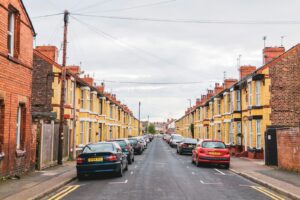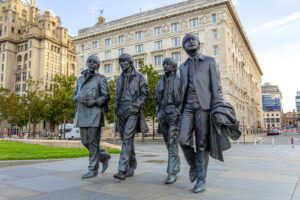Why strong town councils can rejuvenate the high street

Following a report commissioned by the Government which said a lack of ‘inspirational and forward-looking’ local leadership is contributing to failing town centres, Jonathan Owen, chief executive of the National Association of Local Councils (NALC) contacted NewStart to defend the role of town councils in rejuvenating failing high streets.
England’s 10,000 local councils, the first tier of local government, have changed dramatically over the last few years taking over discretionary services previously provided by upper tier councils (such as public conveniences, recognised by Falmouth BID’s chair as vital to the success of town centres).
Their 125,000 elected councils are leading the drive to get involved in big-ticket issues such as promoting health and wellbeing by creating dementia friendly communities, providing community transport to towns (and in Sevenoaks a tourist bus service linking the town with a nearby attraction) and converting disused town premises into community hubs. All actions which promote and support town centres.
More councils are being created in urban areas too including Lowestoft, Swindon, Queens Park in London, Sutton Coldfield and shortly Weymouth.
These developments are reflected in the doubling of the share of council tax they raise – the precept- to £600m a year and NALC estimates they make a total contribution to local communities of some £2bn a year.
Many of these councils are active partners with business and supporting the sustainable rejuvenation of our high streets and town centres.
For example, Northwich town council’s focus has been on bringing people into the town centre by enabling a whole range of different special events in order to inject some vibrancy and to support a retail sector that is facing challenging times.
They recognised that town centres now need to be much more than just retail centres. They need to be real community hubs and they need to actively work to draw people in with something unique. They began with a popular artisan market and followed up with a pro-tour cycling event, a 10 day music festival and a street arts festival complete with a giant pyrotechnic filled dinosaur. As a strategy, it all seems to be paying off. The town centre’s footfall counters report that Northwich is bucking the trend for towns its size, with increasing numbers of visitors.
Shrewsbury recognised the need for collective work on marketing the town as a visitor destination. The town council facilitated Destination Shrewsbury, a tourism management partnership to meet this need and draw up a tourism strategy. This led to the setting up of a local BID. The Town Council invested heavily in infrastructure to keep the town looking good.
A Britain in Bloom Champion of Champions, the town council has continued to install high- quality floral displays that both visitors and residents love. If the 1.5 million annual day visitors to the town spend 10 minutes and £1 more as a result of those blooms, that is a huge return on investment.
NALC believes it is vital that this local knowledge, energy, resource and local community leadership is harnessed to support the broader campaign to rejuvenate high streets and town centres.
NALC is disappointed that this role is often overlooked by upper tier councils and Government and is pressing the government to allow town councils to have a small share – say 5% – of business rates to invest in supporting local businesses; to be able to access support to establish BIDs; and to be able to apply for some of the new resources recently announced in response to Sir John Timpson’s welcome report on the future of the high street.
After all, little things make big things happen!















